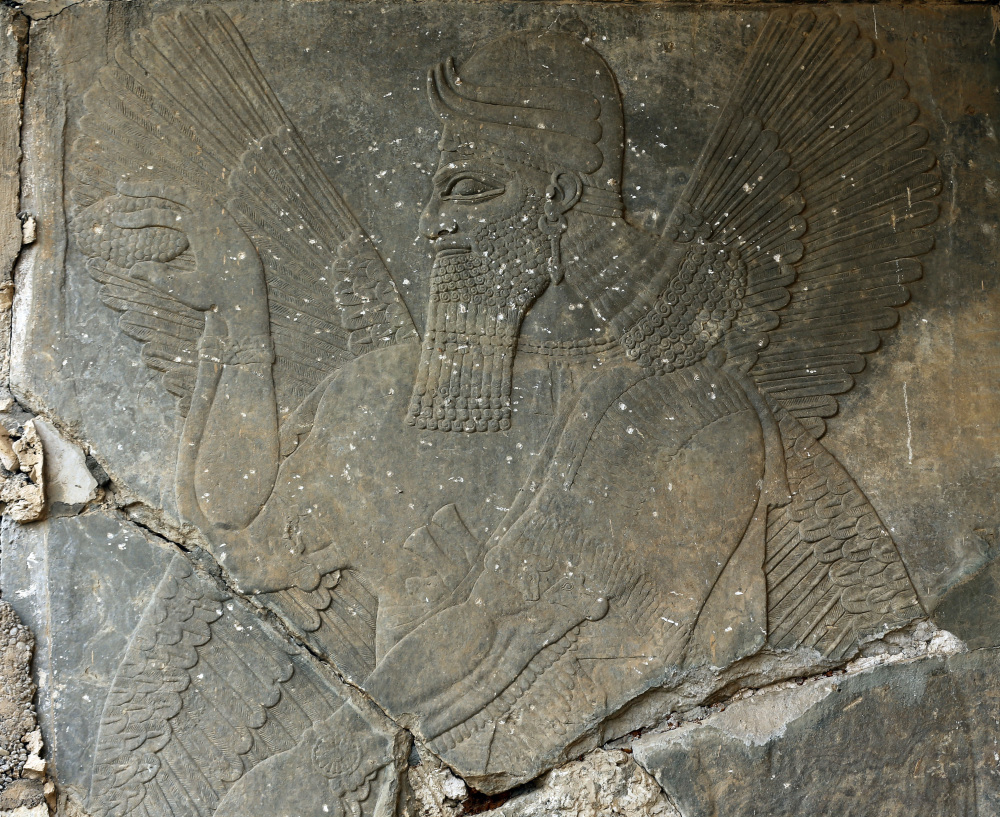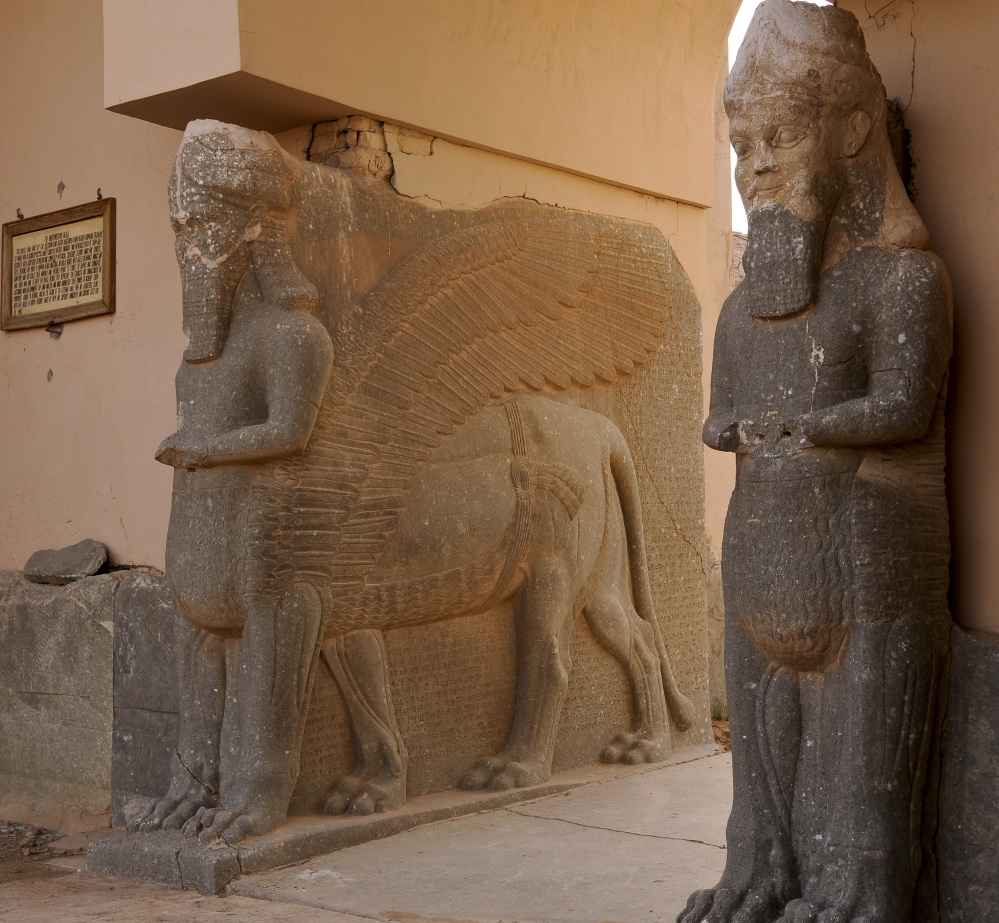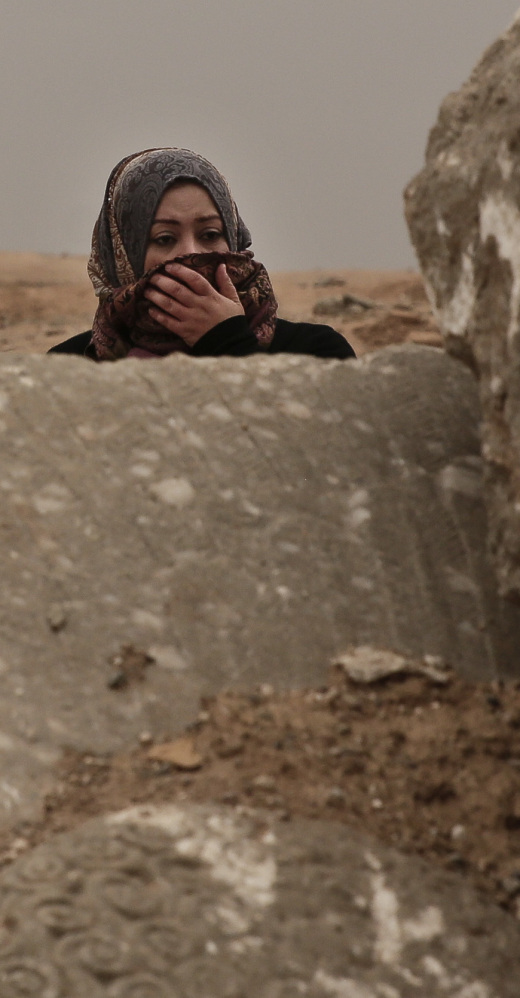NIMRUD, Iraq — The giant winged bulls that once stood sentry at the nearly 3,000-year-old palace at Nimrud have been hacked to pieces. The fantastical human-headed creatures were believed to guard the king from evil, but now their stone remains are piled in the dirt, victims of the Islamic State group’s fervor to erase history.
The militants’ fanaticism devastated one of the most important archaeological sites in the Middle East. But more than a month after the militants were driven out, Nimrud is still being ravaged, its treasures disappearing, piece by piece, imperiling any chance of eventually rebuilding it, an Associated Press team found after multiple visits last month.
With the government and military still absorbed in fighting the war against the Islamic State group in the nearby city of Mosul, the wreckage of the Assyrian Empire’s ancient capital lies unprotected and vulnerable to looters.
No one is assigned to guard the sprawling site, much less catalog the fragments of ancient reliefs, chunks of cuneiform texts, pieces of statues and other rubble after ISIS blew up nearly every structure there. Toppled stone slabs bearing a relief from the palace wall that the AP saw on one visit were gone when journalists returned.
RESTORING RUBBLE?
“When I heard about Nimrud, my heart wept before my eyes did,” said Hiba Hazim Hamad, an archaeology professor in Mosul who often took her students there. “My family and neighbors came to my house to pay condolences.”
Perhaps the only vigilant guardian left for the ruins is an Iraqi archaeologist, Layla Salih. She has visited it multiple times in recent weeks, photographing the destruction to document it and badgering nearby militias to take care of it. Walking with the AP across the broad dirt expanse of the ruin, she was calm, methodical and precise as she pointed out things she’d seen on previous visits that were no longer in place.
Still, Salih does not despair. She searches out reasons for optimism.
“The good thing is the rubble is still in situ,” she said. “The site is restorable.”
explosives erase history
To an untrained eye, that’s hard to imagine, seeing the extent of the destruction that the Islamic State group wreaked in March 2015. Salih estimated that 60 percent of the site was irrecoverable.
The site’s structures – several palaces and temples – are spread over 900 acres on a dirt plateau. A 140-foot-high ziggurat, or step pyramid, once arrested the gaze of anyone entering Nimrud. Where it stood, there is now only lumpy earth. Just past it, in the palace of King Ashurnasirpal II, walls are toppled, bricks spilled into giant piles. The palace’s great courtyard is a field of cratered earth. Chunks of cuneiform writing are jammed in the dirt. Reliefs that once displayed gods and mythical creatures are reduced to random chunks showing a hand or a few feathers of a genie’s wing.
During a Dec. 14 assessment tour by UNESCO, a U.N. demining expert peered at a hole leading to a tomb that appeared to be intact. It might be rigged to explode, the expert said, and the UNESCO crew backed away.
The militants boasted of the destruction in high-definition video propaganda, touting their campaign to purge their self-declared “caliphate” of anything they deemed pagan or heretical.
They dismantled the winged bulls, known as lamassu, as purposefully as any decapitation they carried out in Mosul or the Syrian city of Raqqa. The bearded male heads of the statues are missing – likely taken to be sold on the black market. They then wired the entire palace with explosives and blew it apart, along with two temples.
It was a brutal blow to a site that gave the world a wealth of startling Mesopotamian art.
Copy the Story LinkSend questions/comments to the editors.





Success. Please wait for the page to reload. If the page does not reload within 5 seconds, please refresh the page.
Enter your email and password to access comments.
Hi, to comment on stories you must . This profile is in addition to your subscription and website login.
Already have a commenting profile? .
Invalid username/password.
Please check your email to confirm and complete your registration.
Only subscribers are eligible to post comments. Please subscribe or login first for digital access. Here’s why.
Use the form below to reset your password. When you've submitted your account email, we will send an email with a reset code.